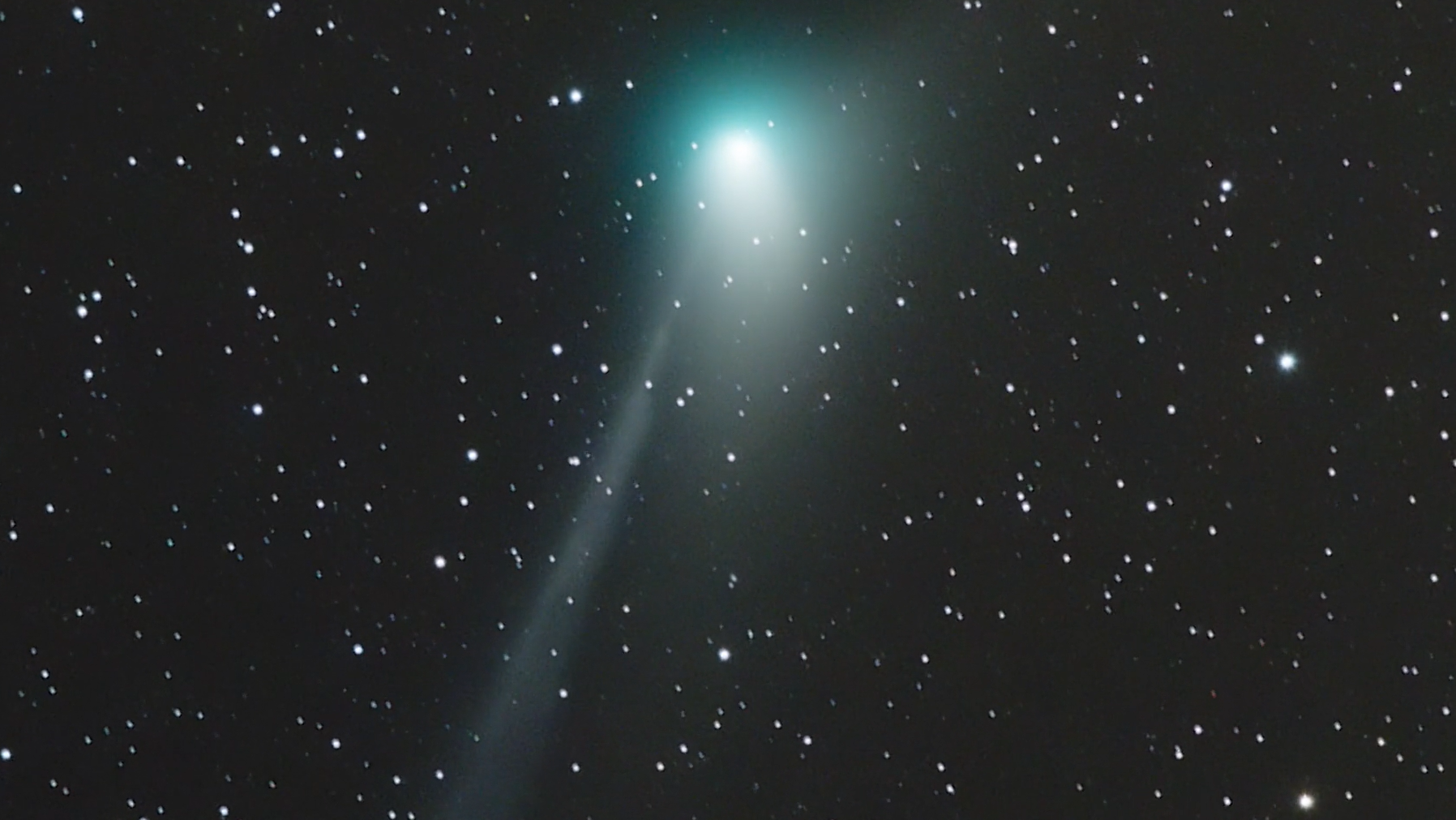
Miguel Claro is a professional photographer, author and science communicator based in Lisbon, Portugal, who creates spectacular images of the night sky. As a European Southern Observatory Photo Ambassador and member of The World At Night and the official astrophotographer of the Dark Sky Alqueva Reserve, he specializes in astronomical "Skyscapes" that connect both Earth and the night sky.
Join Miguel here as he takes us through his new 4K video, "One Month of ZTF – The Green Comet in Motion Revealed in a 4k Time Lapse Video."
I imaged the so-called "green comet" in a long video time-lapse sequence comprising five nights of images in January. The video shows in 4K resolution Comet C/2022 E3 (ZTF), with key moments of incredible activity.
You can see the wonderful greenish coma (atmosphere) from glowing carbon gas, and a white dust tail. Also visible is a "disconnection event" on Jan. 18 when part of the plasma (superheated gas) tail was uprooted from the comet's head, then carried away by the solar wind — or constant stream of particles from our sun.
The comet started at a distance of 90.7 million miles (146.1 million km on Jan. 3), until being very close to Earth on Jan. 31 at a distance of only 26.8 million miles (43.1 million Km).
But ZTF didn't stop surprising us.
Related: Green comet C/2022 E3 (ZTF) may be heading out of the solar system for good
Read more: How to view and photograph comets

Next, the comet started to reveal a rare "anti-tail", a spike which began growing towards the sun. The anti-tail gradually changed its angle in our point of view, as Earth was crossing the orbital plane of the comet. The main ion tail split in two blueish ion tails visible on Jan. 24.
On Jan. 31, the comet was close to reaching the maximum approach to Earth, and the anti-tail was largely scattered in the white dust before starting to vanish.
The long-distance traveler was moving fast against the background starry sky. The video also shows a few rapid greenish meteors crossing the field of view, as well as the moment when ZTF was crossing close to a few galaxies.

Looking for a telescope? We recommend the Celestron Astro Fi 102 as the top pick in our best beginner's telescope guide.
I made a huge effort to create this movie, capturing and processing almost 1 terabytes of data in a total of 10 hours of footage comprised of 521 final images.
I was trying to show the path of this wonderful visitor in the mesmerizing moments of rare beauty provided to us by ZTF, before it started to fade way in a long journey of 50,000 years immersed in the deepest cold and darkness of the solar system.
Ready to go exploring in the night sky on your own? Check out our guides on the best telescopes and best binoculars. You can also get your imaging gear ready using the best cameras for astrophotography and best lenses for astrophotography.
To see more of Miguel Claro's work, please see his website or follow his stories on Instagram at www.instagram.com/miguel_claro.
Editor's Note: If you snap your own photos of the sky and would like to share them with Space.com's readers, send your photo(s), comments, and your name and location to spacephotos@space.com.







